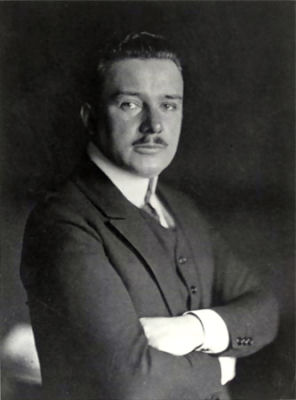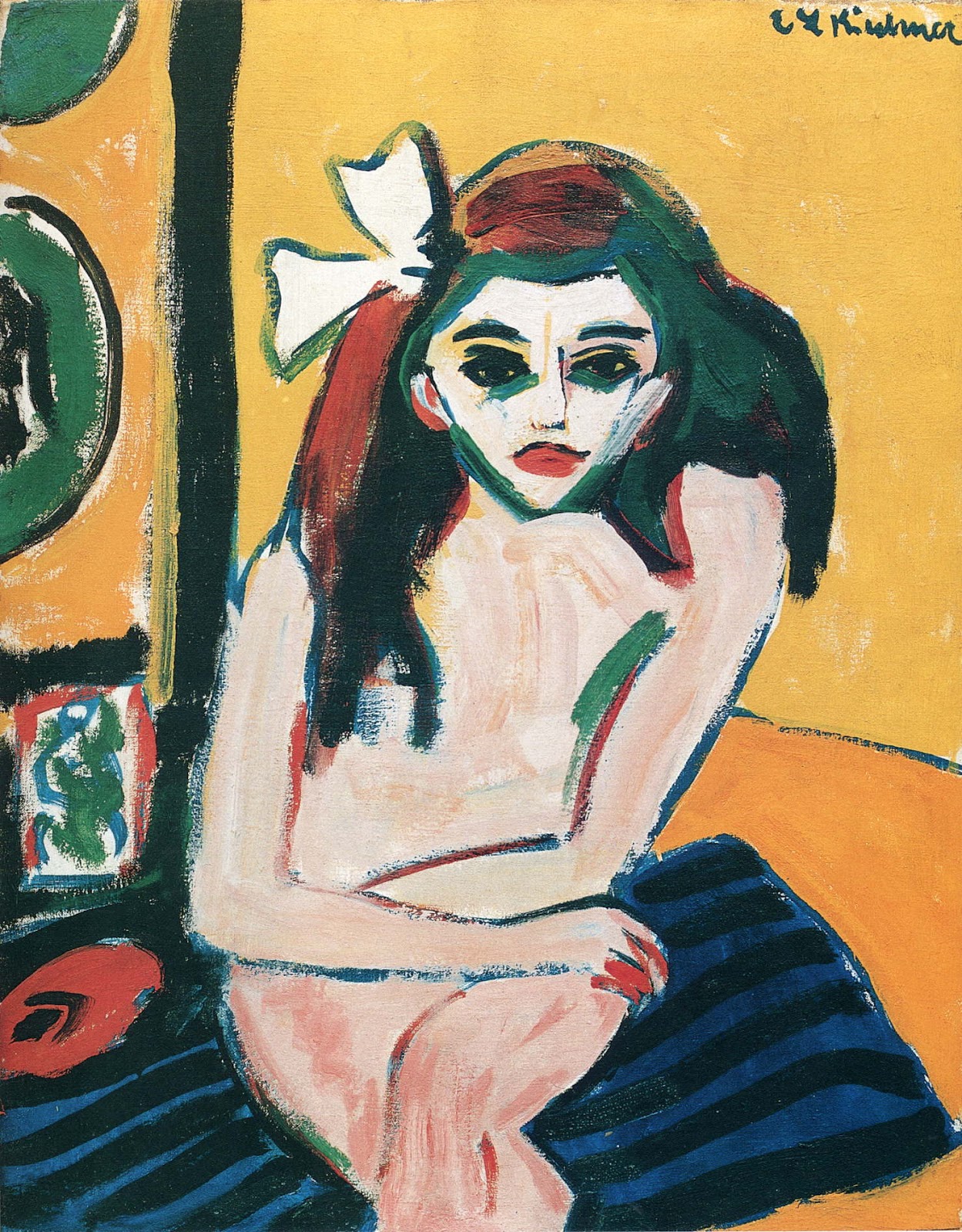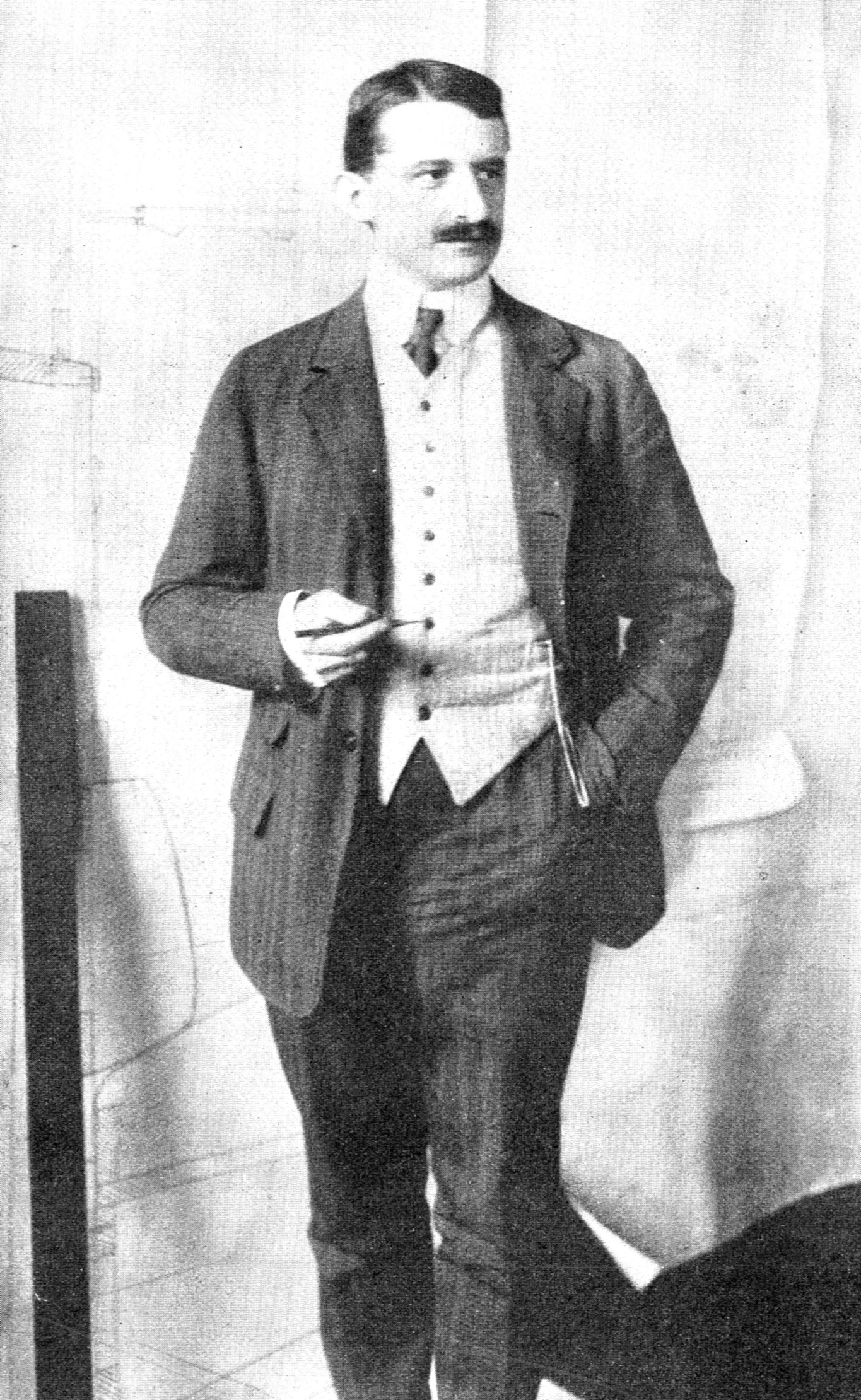|
Collofino
Josef Feinhals (1867–1947), aka Collofino, was a German cigar and cigarette maker, patron of the arts, and writer from Cologne. Under his pseudonym, he wrote ''Non Olet'' ("It does not stink"), an 1,100-page scatological collection (1939). He was a good friend of Hermann Hesse and assisted Hesse in some of his projects. His pseudonym, ''Collofino'', is Italian for "slender neck", an approximate translation of his real name, "Feinhals". Patron of the arts Feinhals is praised as an important supporter of the expressionist movement in the Rhineland, having contributed to the 1906 Art Exhibit in Cologne. His company also supported individual artists, such as his friend, the poet Johannes Theodor Kuhlemann (1891-1939), who had worked for eight years in Feinhals's "tobacco museum." Kuhlemann subsequently wrote a book on tobacco, ''Vom Tabak'', which Feinhals published in 1936. Feinhals and Hesse Feinhals was a friend of Hermann Hesse, who had stayed in his Marienburg villa in 1914. He ... [...More Info...] [...Related Items...] OR: [Wikipedia] [Google] [Baidu] |
Johannes Theodor Kuhlemann
Johannes Theodor Kuhlemann (born: November 4, 1891 in Cologne-Ehrenfeld; died: March 9, 1939 in Cologne) was a German journalist, cabaret artist and writer in the Cologne dialect. Early life Kuhlemann worked as an editor and music critic in Saarbrücken for several years after the First World War. After his return to Cologne, he worked in the secretary's office of the tobacco merchant and writer Josef Feinhals (pseudonym Collofino)) and in the Tobacco Museum as a cultural historian. Kuhlemann studied the history, literature, art and music of Europe and mastered seven foreign languages. Books and poetry He was inspired to write Cologne dialect poetry by the actor, director and theater director Franz Goebels, who had founded the "Theater des werktätigen Volkes" “ in Cologne and with whom he collaborated on the revue ''D'r zweite halve Hahn''. Promoted by Otto Brües, he published numerous Cologne poems. He also published several cultural-historical articles in the Köl ... [...More Info...] [...Related Items...] OR: [Wikipedia] [Google] [Baidu] |
Scatology
In medicine and biology, scatology or coprology is the study of feces. Scatological studies allow one to determine a wide range of biological information about a creature, including its diet (and thus where it has been), health and diseases such as tapeworms. A comprehensive study of scatology was documented by John Gregory Bourke under the title '' Rites of All Nations'' (1891), with a 1913 German translation including a foreword by Sigmund Freud. An abbreviated version of the work was published as ''The Portable Scatalog'' in 1994. Etymology The word derives from the Greek ( ) meaning "dung, feces"; ''coprology'' derives from the Greek of similar meaning. Psychology In psychology, a scatology is an obsession with excretion or excrement, or the study of such obsessions. In sexual fetishism, scatology (usually abbreviated ''scat'') refers to coprophilia, when a being is sexually aroused by fecal matter, whether in the use of feces in various sexual acts, watching someo ... [...More Info...] [...Related Items...] OR: [Wikipedia] [Google] [Baidu] |
Joseph Maria Olbrich
Joseph Maria Olbrich (22 December 1867 – 8 August 1908) was an Austrian architect and one of the Vienna Secession founders. Early life Olbrich was born in Opava, Austrian Silesia (now Czech Republic), the third child of Edmund and Aloisia Olbrich. He had two sisters, who died before he was born, and two younger brothers, John and Edmund. His father was a prosperous confectioner and wax manufacturer who also owned a brick works, where Olbrich's interest in the construction industry has its early origin. Career Olbrich studied architecture at the University of Applied Arts Vienna (''Wiener Staatsgewerbeschule'') and the Academy of Fine Arts Vienna, where he won several prizes. These included the Prix de Rome, for which he traveled in Italy and North Africa. In 1893, he started working for Otto Wagner, the Austrian architect, and probably did the detailed construction for most of Wagner's Wiener Stadtbahn (Metropolitan Railway) buildings. In 1897, Gustav Klimt, Olbrich, Josef ... [...More Info...] [...Related Items...] OR: [Wikipedia] [Google] [Baidu] |
Cigar
A cigar is a rolled bundle of dried and fermented tobacco leaves made to be smoked. Cigars are produced in a variety of sizes and shapes. Since the 20th century, almost all cigars are made of three distinct components: the filler, the binder leaf which holds the filler together, and a wrapper leaf, which is often the highest quality leaf used. Often there will be a cigar band printed with the cigar manufacturer's logo. Modern cigars often come with two bands, especially Cuban cigar bands, showing Limited Edition (''Edición Limitada'') bands displaying the year of production. Cigar tobacco is grown in significant quantities primarily in Central America and the islands of the Caribbean, including Cuba, the Dominican Republic, Haiti, Honduras, Mexico, Ecuador, Nicaragua, Guatemala, Costa Rica, Panama, and Puerto Rico; it is also produced in the Eastern United States, Brazil and in the Mediterranean countries of Italy and Spain (in the Canary Islands), and in Indonesia and the P ... [...More Info...] [...Related Items...] OR: [Wikipedia] [Google] [Baidu] |
De Bezige Bij
De Bezige Bij ("the busy bee") is one of the most important literary publishing companies in the Netherlands. History The company was founded illegally in 1943, during the German occupation of the Netherlands by ; its first publication was a poem by Jan Campert called ''De Achttien Dooden'' ("The eighteen dead"), which describes the execution of 15 resistance fighters and three communists. The poem was sold to raise money for Jewish children who were placed with Dutch families; when it was published, in the spring of 1943, Campert had already died in the Neuengamme concentration camp. When the German occupier rounded up students for the Arbeitseinsatz, Lubberhuizen hid in the attic of Maarten Vink, a surgeon, and ran the press from there. The name is derived from one of Lubberhuizen's aliases, "Bas." After he had signed a note, "Bas (busy)," an English-speaking friend joked, "Bas, busy as a bee can be," which led to the current name. In 1997, De Bezige Bij became part of the Week ... [...More Info...] [...Related Items...] OR: [Wikipedia] [Google] [Baidu] |
1947 Deaths
It was the first year of the Cold War, which would last until 1991, ending with the dissolution of the Soviet Union. Events January * January–February – Winter of 1946–47 in the United Kingdom: The worst snowfall in the country in the 20th century causes extensive disruption of travel. Given the low ratio of private vehicle ownership at the time, it is mainly remembered in terms of its effects on the railway network. * January 1 - The Canadian Citizenship Act comes into effect. * January 4 – First issue of weekly magazine ''Der Spiegel'' published in Hanover, Germany, edited by Rudolf Augstein. * January 10 – The United Nations adopts a resolution to take control of the free city of Trieste. * January 15 – Elizabeth Short, an aspiring actress nicknamed the "Black Dahlia", is found brutally murdered in a vacant lot in Los Angeles; the mysterious case is never solved. * January 16 – Vincent Auriol is inaugurated as president of France. * January 19 – Ferry ... [...More Info...] [...Related Items...] OR: [Wikipedia] [Google] [Baidu] |
1867 Births
Events January–March * January 1 – The Covington–Cincinnati Suspension Bridge opens between Cincinnati, Ohio, and Covington, Kentucky, in the United States, becoming the longest single-span bridge in the world. It was renamed after its designer, John A. Roebling, in 1983. * January 8 – African-American men are granted the right to vote in the District of Columbia. * January 11 – Benito Juárez becomes Mexican president again. * January 30 – Emperor Kōmei of Japan dies suddenly, age 36, leaving his 14-year-old son to succeed as Emperor Meiji. * January 31 – Maronite nationalist leader Youssef Bey Karam leaves Lebanon aboard a French ship for Algeria. * February 3 – ''Shōgun'' Tokugawa Yoshinobu abdicates, and the late Emperor Kōmei's son, Prince Mutsuhito, becomes Emperor Meiji of Japan in a brief ceremony in Kyoto, ending the Late Tokugawa shogunate. * February 7 – West Virginia University is established in Morgantown, West Virginia. * Febru ... [...More Info...] [...Related Items...] OR: [Wikipedia] [Google] [Baidu] |
Wallraf–Richartz Museum
The Wallraf–Richartz Museum (full name in German: ') is one of the three major museums in Cologne, Germany. It houses an art gallery with a collection of fine art from the medieval period to the early twentieth century. History The museum dates back to the year 1824, when the comprehensive collection of medieval art from Franz Ferdinand Wallraf came to the city of Cologne by inheritance. The first building was donated by Johann Heinrich Richartz, and the museum was opened in 1861, just after his death. The collection was regularly expanded by donations, especially the Haubrich collection of contemporary art in 1946. In 1976, on the occasion of the donation of Mr. and Mrs. Ludwig, the collection was split. The new Museum Ludwig took over the exhibition of the 20th century art. The current building from 2001, near the Cologne City Hall, was designed by Oswald Mathias Ungers. Also in 2001, Swiss collector Gérard Corboud gave his impressionist and postimpressionist collect ... [...More Info...] [...Related Items...] OR: [Wikipedia] [Google] [Baidu] |
Degenerate Art
Degenerate art (german: Entartete Kunst was a term adopted in the 1920s by the Nazi Party in Germany to describe modern art. During the dictatorship of Adolf Hitler, German modernist art, including many works of internationally renowned artists, was removed from state-owned museums and banned in Nazi Germany on the grounds that such art was an "insult to German feeling", un-German, Freemasonic, Jewish, or Communist in nature. Those identified as degenerate artists were subjected to sanctions that included being dismissed from teaching positions, being forbidden to exhibit or to sell their art, and in some cases being forbidden to produce art. ''Degenerate Art'' also was the title of an exhibition, held by the Nazis in Munich in 1937, consisting of 650 modernist artworks chaotically hung and accompanied by text labels deriding the art. Designed to inflame public opinion against modernism, the exhibition subsequently traveled to several other cities in Germany and Austria. While m ... [...More Info...] [...Related Items...] OR: [Wikipedia] [Google] [Baidu] |
Ernst Ludwig Kirchner
Ernst Ludwig Kirchner (6 May 1880 – 15 June 1938) was a German expressionist painter and printmaker and one of the founders of the artists group Die Brücke or "The Bridge", a key group leading to the foundation of Expressionism in 20th-century art. He volunteered for army service in the First World War, but soon suffered a breakdown and was discharged. His work was branded as "degenerate" by the Nazis in 1933, and in 1937 more than 600 of his works were sold or destroyed."Ernst Ludwig Kirchner: German, 1880–1938" . |
World War II
World War II or the Second World War, often abbreviated as WWII or WW2, was a world war that lasted from 1939 to 1945. It involved the vast majority of the world's countries—including all of the great powers—forming two opposing military alliances: the Allies and the Axis powers. World War II was a total war that directly involved more than 100 million personnel from more than 30 countries. The major participants in the war threw their entire economic, industrial, and scientific capabilities behind the war effort, blurring the distinction between civilian and military resources. Aircraft played a major role in the conflict, enabling the strategic bombing of population centres and deploying the only two nuclear weapons ever used in war. World War II was by far the deadliest conflict in human history; it resulted in 70 to 85 million fatalities, mostly among civilians. Tens of millions died due to genocides (including the Holocaust), starvation, ma ... [...More Info...] [...Related Items...] OR: [Wikipedia] [Google] [Baidu] |
Bruno Paul
Bruno Paul (19 January 1874 – 17 August 1968) was a German architect, illustrator, interior designer, and furniture designer. Trained as a painter in the royal academy just as the Munich Secession developed against academic art, he first came to prominence as a cartoonist and illustrator in the German ''fin de siècle'' magazine ''Jugend'', and in the satirical ''Simplicissimus'' from 1897 through 1906, in the years where its criticism of Wilhelm II brought prosecutions from the government. By 1907 Paul became one of the founding members of the Deutscher Werkbund, and had launched multiple careers in industrial design, interior design (notably, for Norddeutscher Lloyd's ocean liners), furniture design, and architecture. His work of the time reflects a historic stylistic transition from the curved shapes and floral imagery of Jugendstil to simpler forms, straighter lines, and an adaptation to machine production methods. By 1907 Paul had also been appointed Director of the ... [...More Info...] [...Related Items...] OR: [Wikipedia] [Google] [Baidu] |








